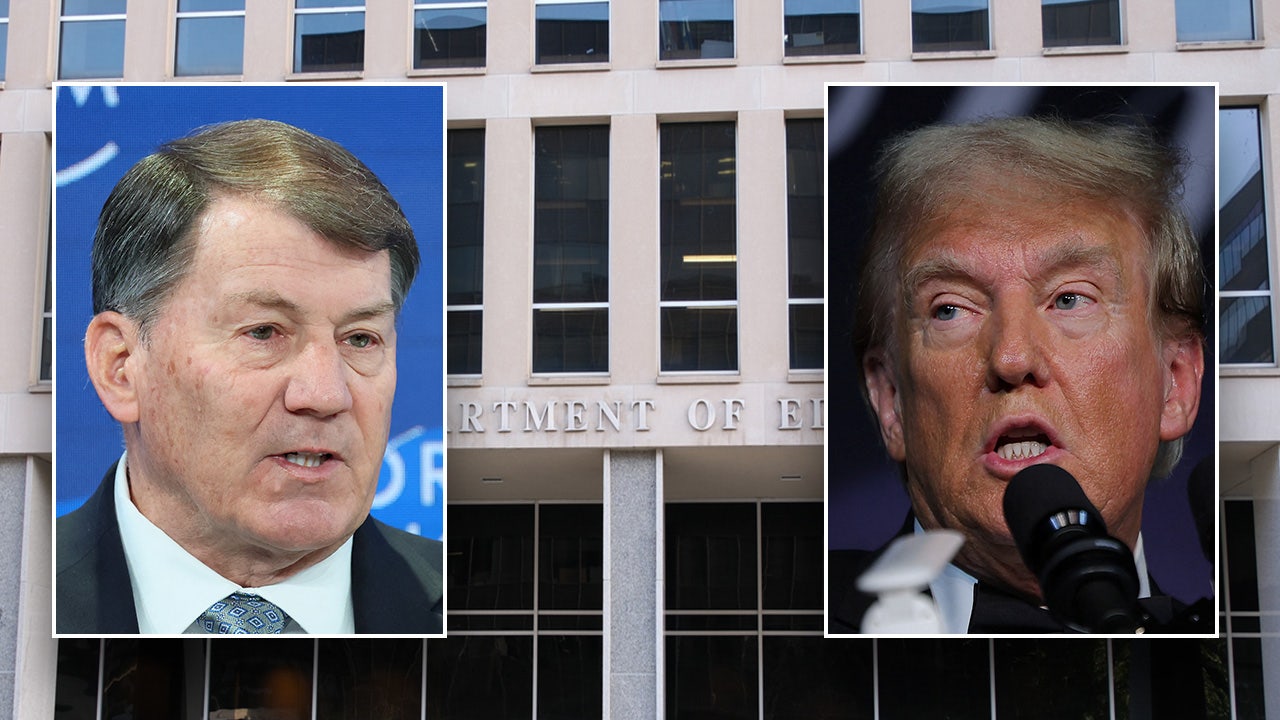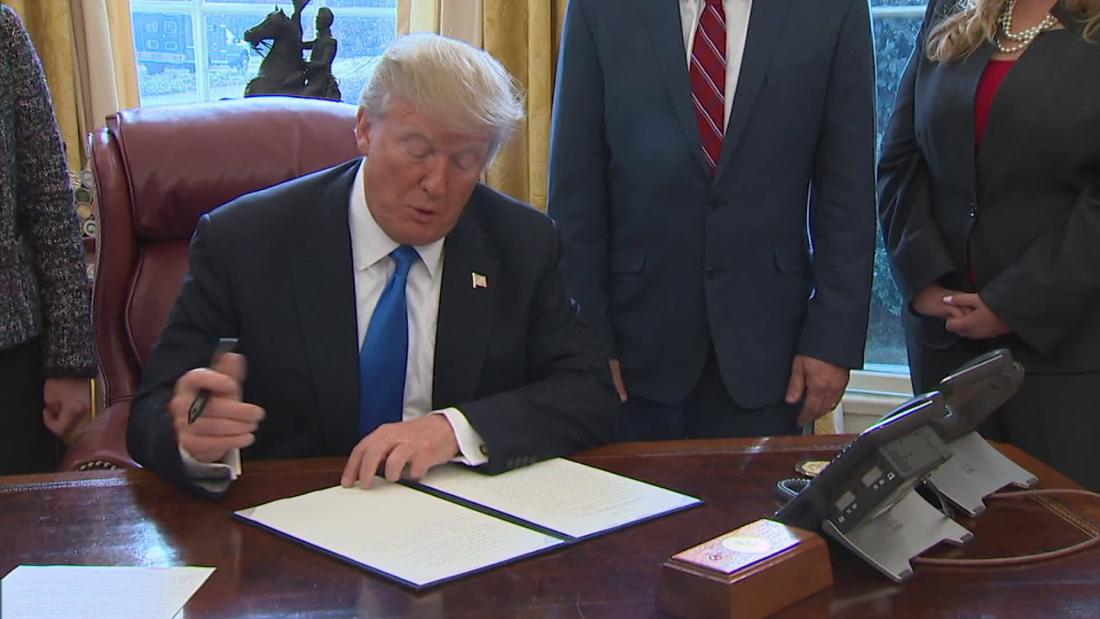The Debate Over The Potential Abolition Of The U.S. Department Of Education
Discussions surrounding the possible elimination of the U.S. Department of Education have ignited widespread debates throughout the nation. As reports emerge indicating that President Trump is considering signing an executive order to dismantle this federal agency, the potential ramifications for the education sector are vast. To fully grasp the rationale behind this decision and its possible consequences, it is essential for stakeholders, educators, and the general public to delve deeper into the implications of such a move.
This executive order, should it come to fruition, would dismantle one of the most critical federal entities responsible for shaping and overseeing educational policies across the United States. Proponents of the move argue that decentralizing education could empower states and local communities, fostering innovation and better tailoring policies to the unique needs of each region. However, critics warn of the potential chaos that could ensue without the stabilizing influence of federal oversight. This article aims to provide a comprehensive, balanced examination of the situation, exploring all sides of the debate.
Through this analysis, we will explore the history of the Department of Education, the arguments both for and against its abolition, and the potential effects on students, teachers, and educational institutions. By the conclusion of this piece, readers will have a clearer understanding of the implications of this executive order and the broader discourse concerning federal involvement in education.
Read also:Thrilling Nhl Showdown Maple Leafs Triumph Over Avalanche In A Tense 21 Match
Exploring the Role of the Department of Education
Established in 1979, the U.S. Department of Education stands as a federal agency dedicated to promoting student achievement and fostering equality in educational opportunities. Its influence spans a wide array of functions, including the allocation of funding to public schools, the enforcement of civil rights laws to ensure equitable access to education, and the conduct of research aimed at enhancing educational outcomes.
Core Functions of the Department of Education
The Department of Education carries out several pivotal functions, which include:
- Managing federal financial aid programs designed to assist students in pursuing higher education.
- Enforcing civil rights laws to safeguard equal access to education for all individuals, regardless of background or circumstance.
- Gathering and disseminating data on the state of America's schools, providing valuable insights that inform policy decisions.
- Providing leadership and financial support to states and local education agencies, ensuring that educational initiatives are effectively implemented.
President Trump's Executive Order: An Overview of the Proposed Plan
Reports suggest that President Trump is preparing to sign an executive order aimed at dismantling the Department of Education. The primary rationale behind this decision centers on reducing federal bureaucracy and granting states greater autonomy in managing their educational systems, potentially leading to more efficient and tailored educational policies.
Potential Timeline and Implementation Steps
While the precise timeline for the executive order remains uncertain, insiders speculate that the process could commence within the next few months. Key steps in the implementation might involve:
- Transferring the responsibilities currently held by the Department of Education to state governments, allowing them to assume greater control over educational policies.
- Redirecting federal funds to other agencies or state-level programs, reallocating resources to align with new priorities.
- Gradually phasing out existing programs managed by the Department of Education, ensuring a smooth transition to the new system.
Arguments Supporting the Abolition of the Department
Advocates for the executive order argue that the Department of Education has evolved into an overly bureaucratic entity that stifles innovation and impedes local control. By dismantling the department, they believe states and local communities will gain the flexibility needed to design educational policies that better suit their specific requirements.
Economic Benefits of Abolition
Proponents highlight several potential economic advantages, including:
Read also:Cassper Nyovest Drama Nota Baloyi Weighs In Fans React
- A reduction in the administrative costs associated with maintaining a large federal agency, allowing for more efficient allocation of resources.
- Enhanced flexibility for states to allocate funds according to their unique priorities, potentially leading to more effective use of financial resources.
Counterarguments: Why Some Oppose the Abolition
Conversely, opponents of the executive order express concern that abolishing the Department of Education could introduce significant challenges, particularly in ensuring equitable access to quality education for all students. They stress the importance of federal oversight in safeguarding the rights of marginalized groups, fearing that its absence could lead to disparities in educational opportunities.
Civil Rights Concerns
One of the primary worries is the potential weakening of civil rights protections. The Department of Education plays a crucial role in enforcing laws that prohibit discrimination in schools, ensuring that all students have access to a fair and equitable education. Without federal oversight, there is a risk that these protections could be diminished or overlooked.
Historical Context: The Federal Government's Role in Education
To fully evaluate the implications of this executive order, it is vital to consider the historical context of federal involvement in education. Over the decades, the federal government has progressively assumed a more active role in shaping educational policies, particularly in areas such as funding, accountability, and civil rights.
Key Legislative Milestones
Several landmark legislative achievements have marked the evolution of federal involvement in education:
- The Elementary and Secondary Education Act (ESEA) of 1965, which marked the beginning of federal funding for public schools, aiming to address educational inequalities.
- The Individuals with Disabilities Education Act (IDEA), which ensures that students with disabilities have access to appropriate educational resources and support.
- The No Child Left Behind Act (NCLB) of 2001, which emphasized accountability and the use of standardized testing to measure educational progress and ensure quality education for all students.
The Impact on Students and Educators
The potential abolition of the Department of Education could profoundly affect students and educators nationwide. Changes in funding allocation and shifts in policy priorities could create a new educational landscape, presenting both opportunities and challenges for those involved in the education sector.
Financial Ramifications
Financially, the redistribution of federal funds could lead to varied outcomes. Some states might benefit from increased flexibility in spending, enabling them to tailor their educational budgets to address specific needs. Conversely, other states could face difficulties in meeting the demands of their growing student populations, potentially leading to resource shortages and strained educational systems.
Global Perspectives on Education Policy
To broaden our understanding of education policy, it is valuable to examine how other countries approach this critical issue. Many nations have developed systems that balance centralized and decentralized governance, offering insights into effective models of educational administration.
Comparative Analysis
Countries like Finland and Singapore have achieved remarkable success in education by empowering local educators while maintaining national standards. These examples underscore the importance of striking a balance between federal oversight and local control, ensuring that educational policies are both responsive to local needs and aligned with broader national goals.
Public Sentiment and Political Ramifications
The announcement of this executive order has ignited intense debates among politicians, educators, and the general public. Public opinion remains divided, with some viewing the move as a bold step toward reform, while others perceive it as a threat to educational equity and fairness.
Political Divisions
Politically, the initiative aligns with the Republican Party's longstanding commitment to smaller government and increased state autonomy. Nevertheless, it faces significant opposition from Democrats and advocacy groups concerned about the potential erosion of federal protections, highlighting the deep political divides surrounding this issue.
Expert Insights and Analysis
To provide a comprehensive analysis, we consulted experts in education policy and administration. Their perspectives shed light on the complexities of this issue and the potential long-term effects of abolishing the Department of Education.
Expert Testimonials
Dr. Jane Smith, a distinguished education policy analyst, remarked, "While decentralization can offer certain advantages, it is imperative to ensure that all students, regardless of their background, have access to quality education. Achieving this requires meticulous planning and coordination at both the state and federal levels."
Final Thoughts and Call to Action
In summary, the proposed executive order to abolish the Department of Education signifies a substantial shift in U.S. educational policy. While it presents opportunities for innovation and localized control, it also poses challenges in maintaining equity and protecting civil rights. As stakeholders and citizens, it is crucial to remain informed and actively participate in the ongoing dialogue surrounding this pivotal issue.
We invite you to share your thoughts and opinions in the comments section below. Furthermore, we encourage you to explore related articles on our website to deepen your understanding of this critical matter. Together, we can contribute to shaping a brighter future for education in America.
Table of Contents
- Exploring the Role of the Department of Education
- President Trump's Executive Order: An Overview of the Proposed Plan
- Arguments Supporting the Abolition of the Department
- Counterarguments: Why Some Oppose the Abolition
- Historical Context: The Federal Government's Role in Education
- The Impact on Students and Educators
- Global Perspectives on Education Policy
- Public Sentiment and Political Ramifications
- Expert Insights and Analysis
- Final Thoughts and Call to Action


